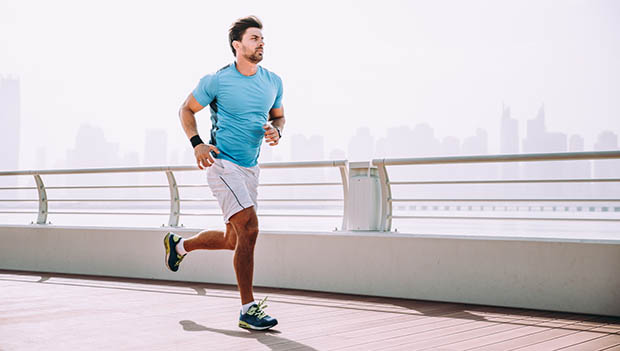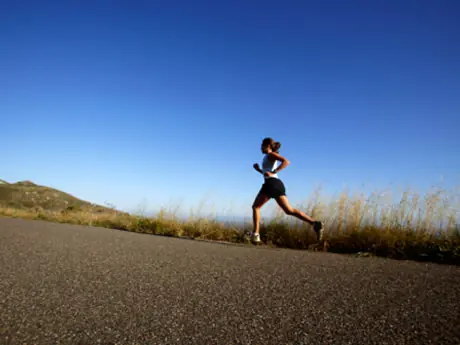
When we think of running mechanics, it's only natural our legs come to mind first—obviously they do the lion's share of the work while running, and they're essentially what propels us from Point A (the start line) to Point B (the finish line).
If you hire a coach or head to your local running store for a gait analysis, suggestions like "shorten your stride" or "run taller" might be thrown around, and exercises (or shoes) might be prescribed to you to fix a specific issue. But to be clear, we're not saying to stop focusing on your lower-body mechanics, but rarely do a runner's arms get any attention.
Usually this causes runners to default to what feels most comfortable to themselves, but studies show that what your arms "do" while running can made a huge difference in overall efficiency.
A 2014 study published in the Journal of Experimental Biology proved that a proper swinging motion while running can save upwards of 13 percent in energy expenditure.
How was this determined?
A team from the University of Colorado, Boulder, gathered 13 dedicated runners and had them run on a treadmill in seven-minute increments while recording their oxygen consumption rates and CO2 exhaled.
The baseline test recorded each runner swinging their arms, and the following three tests had them run with their arms crossed across their chest, holding their hands on top of their heads and holding their arms loosely behind their back.
Running with a proper arm swinging motion saved the participants an average of three percent in energy expenditure when compared to running with their arms behind their back, and a whopping 13 percent when their hands were held on their head.
"The arms weigh about 10 percent of the body, so if we took them away, we could hypothetically save 10 percent of the metabolic cost of running, but at the same time you wouldn't have any mass to counteract the swinging of the legs, so running would be more difficult to stabilize," Christopher Arellano of Brown University says.
This brings up another question Arellano briefly touched on: Why does swinging your arms help with efficiently?
Essentially, swinging your arms helps stabilize the entire body while running. The natural forces your legs create while catching and pushing off from the ground causes your body to twist through your hips and core, and swinging your arms opposite to your legs helps counteract these forces. The energy used to swing your arms is less than the energy required to counteract this rotation if the arms were held still.
Not only that, but swinging your arms while running can help set a healthy tempo with the legs following suit. This rhythm is important, especially for distance runners.
So how can you promote a healthy arm swing? Our article "Good Running Form for Beginners" outlines three things to keep in mind.
Zipper Lines
Imagine you're wearing a jacket with a zipper down the middle while running. Occasionally look down at your arms and monitor where your hands stop at the most forward part of the swing. If you see your thumb and finger cross over that "zipper" line, you're going too far—hold your hands out wider and swing your arms back more for a quick fix.
Chicken Wings
As a runner gets more and more fatigued, their arms naturally start to pull up and sit closer to the body, causing a shorter swing (and shorter stride). Release some of this tension by relaxing your shoulders, letting your arms swing down at your sides and shaking out your hands. After about 50 to 100 meters, gradually return your arms back to their natural (relaxed) position.
Potato Chips
Continuing on this tension theme, make sure your hands aren't clinched too tightly. This tension will, over time, work up through your forearms and into your shoulders and neck, reducing efficiency and comfort. You can help prevent this tension by imaging your hands are each holding a potato chip that you're trying not to crush. This will keep your hands and arms relaxed, and help you save energy over time.
READ THIS NEXT: How to Improve Your Running Form With Arm Swing and Core Stability
Get ACTIVE on the Go


Couch to 5K®
The best way to get new runners off the couch and across the finish line of their first 5K.
Available for iOS | Android







Discuss This Article